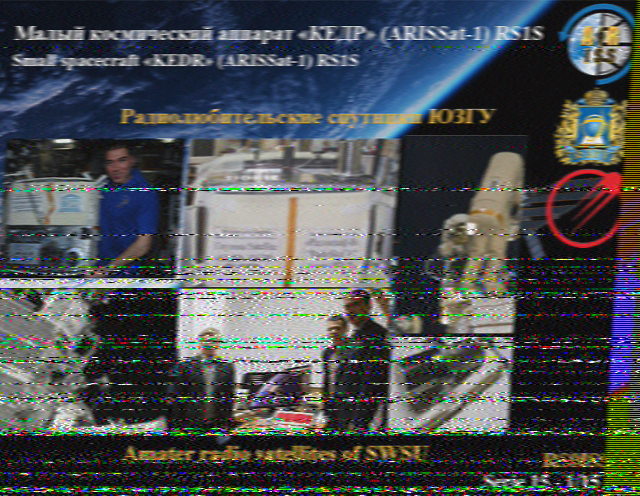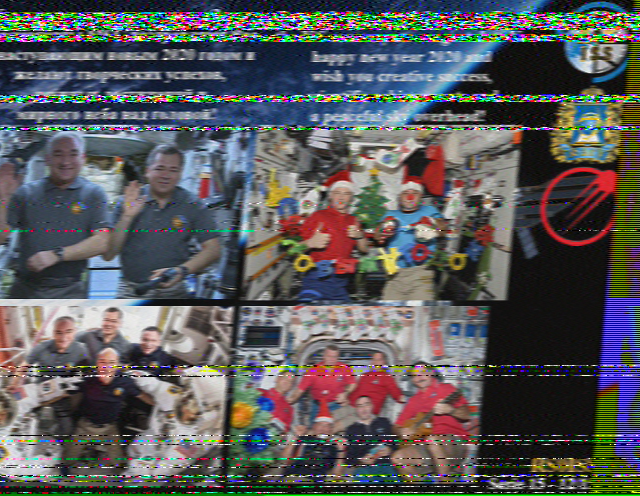Thanks to a fellow VECTOR volunteer Nick Doyle, I found out that the International Space Station would be broadcasting slow-scan television images at the end of the year. I decided to try and pick those up with my handheld radio.
Planning
From the official announcement, I got the frequency (145.800 MHz) and the broadcast times.
Next I had to figure out when the ISS would be passing over my location. Most of the ISS tracking websites and applications are aimed at people wanting to see the reflection of the sun on the station and so they only list the passes during nighttime before the earth casts a shadow that would prevent any visual contacts.
Thankfully, Nick found a site which has a option to show all of the passes, visible or not and so I was able to get a list of upcoming passes over Vancouver.
Hardware
From a hardware point-of-view, I didn't have to get any special equipment. I used my Kenwood D72 and an external Comet SBB5 mobile antenna.
The only other pieces of equipment I used was a 2.5mm mono adapter which I used to connect a 3.5mm male-male audio cable in the speaker port of the radio and the microphone input of my computer.
Software
The software I used for the recording was Audacity set to a sampling rate of 48 kHz.
Then I installed qsstv and configured it to read input from a file instead of the sound card.
Results
Here is the audio I recorded from the first pass (65 degrees at the highest point) as well as the rendered image:

The second pass (60 degrees) was not as successful since I didn't hold the squelch open and you can tell from the audio recording that the signal got drowned in noise a couple of times. This is the rendering of that second pass:

Tips
The signal came through the squelch for only about a minute at the highest
point, so I found it best to open the squelch fully (F+Moni) as soon as
the bird is visible.
Another thing I did on a third pass (16 degrees at the highest point -- not particularly visible) was to plug the speaker out of my radio into a Y splitter so that I could connect it to my computer and an external speaker I could take outside with me. Since I was able to listen to the audio, I held the antenna and tried to point it at the satellite's general direction as well as varying the orientation of the antenna to increase the signal strength.